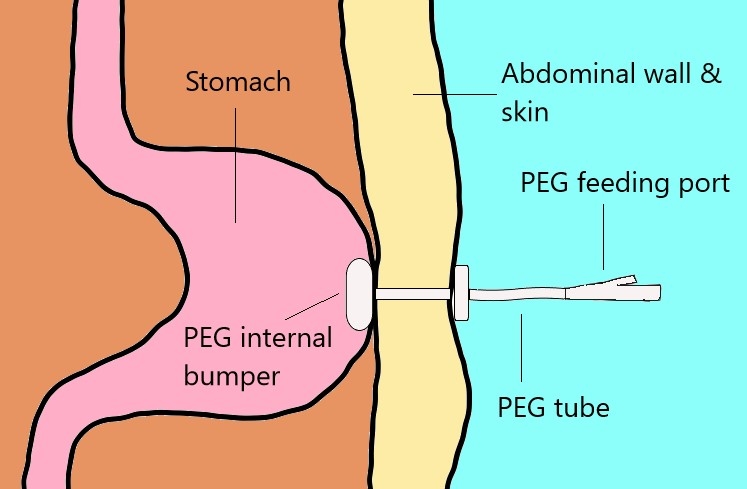Percutaneous Endoscopic Gastrostomy (PEG)
What is a PEG?
PEG stands for percutaneous endoscopic gastrostomy, a procedure in which a flexible feeding tube is placed through the abdominal wall and into the stomach. PEG allows nutrition, fluids and/or medications to be put directly into the stomach, bypassing the mouth and oesophagus.

How is the PEG performed?
Your gastroenterologist will use a gastroscope (flexible tube with tiny camera and light source at its end) to guide the creation of a small opening through the skin of the upper abdomen and directly into the stomach. A secure feeding tube can then be placed into the stomach. Patients generally receive an intravenous sedative and local anaesthesia, and an antibiotic is given intravenously before the procedure. Patients can usually go home the day of the procedure or the next day with guidance of feeding from a dietician.
Who can benefit from a PEG?
Patients who have difficulty swallowing or have an inability to take adequate nutrition through the mouth can benefit from this procedure.
How are feedings given? Can I still eat and drink?
Specialized liquid nutrition, as well as fluids, are given through the PEG tube. If the PEG tube is placed because of swallowing difficulty (e.g. following a stroke), there will still be restrictions on oral intake. Although a few PEG patients may continue to eat or drink after the procedure, this is a very important issue to discuss with your gastroenterologist.
Are there complications from PEG placement?
Complications can occur with the PEG placement, including pain at the PEG site, infection, bleeding or perforation of the bowel wall, leakage of stomach contents around the tube site, and dislodgment or malfunction of the tube. Your gastroenterologist can describe for you symptoms that could indicate a possible complication.
How long do these tubes last? How are they removed?
PEG tubes can last for months or years. However they can break down or become clogged over extended periods of time, and they might need to be replaced. If the PEG is no longer needed, it can be removed by your gastroenterologist. PEG sites close quickly once the tube is removed, so accidental dislodgment requires immediate attention.
